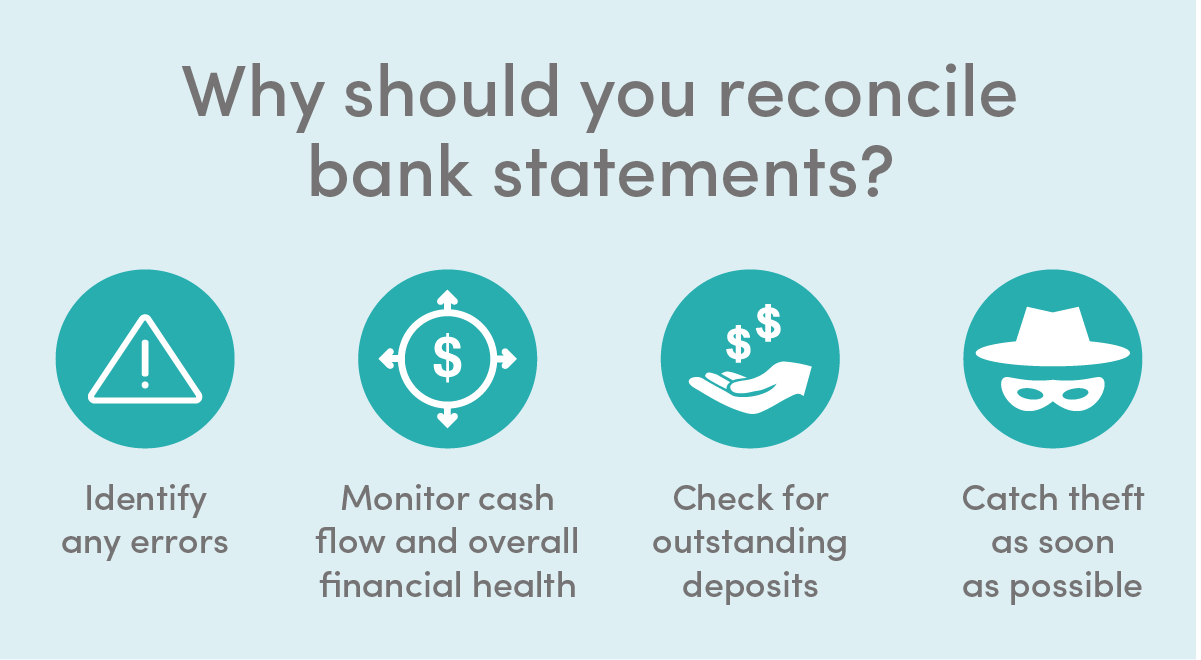Written by: Jacob Dayan
Several financial documents are integral to any small business’s success, including the profit and loss statement, the cash flow statement, and income statement. The three mentioned statements are crafted internally, usually by a dedicated small business accountant. However, one important statement, the bank statement, is generated externally.
Banks and financial institutions prepare this document each month, allowing people and businesses to monitor and evaluate their finances. All small business owners can benefit from regularly reviewing and reconciling their bank statements.
A bank statement likewise allows you to see your income streams, expenses, spending activity, and profits related to the account. Financial experts recommend understanding the bank statement because it helps you make informed decisions and develop better financial habits.
However, individuals and small business owners often face bank errors, account balance irregularities, and problems with deposits and withdrawals.
Why Reconcile Bank Statements?
Various reasons to reconcile your bank statement include:
Keep reading to learn more about reconciling bank statements, using the links below to navigate to the sections that best answer your questions.
Reconciling your bank statement is an important process that focuses on finding the difference between your bank balance in the statement and the amount in your company’s cash account at the end of the month.
Small business owners can take advantage of the process to ascertain their true cash balance by identifying discrepancies and irregularities in their bank accounts. For example, if the bank has cashed a check for a different amount, it is considered a bank mistake. Likewise, you have made deposits, but the bank did not record them, it is considered an online banking software error.
Another reason bank account reconciliation is necessary is to legitimize automatic deposits and withdrawals that the accounting software hasn’t recorded. Payments taken without your knowledge are considered theft or fraud, meaning you need to reconcile your bank to know what happened.
Reconciling a bank statement helps you identify irregularities, possible bank errors, and fraudulent activities that happened in your individual or company’s bank account during the months. The entire process can keep you informed about authorized and unauthorized transactions, uncashed checks, income and expenses reviews, and more.
Here are the steps for how to prepare a bank reconciliation statement:
The bank statement reconciliation process usually starts with comparing your individual or company’s statement and ledger cash account. The process requires you to check off all matching items to ensure all items in the ledger have cleared the bank account. After the item clears your company’s bank account, it means the completion of a specific transaction.
Adding deposits in transit to your ending balance is the second essential step after completing the comparisons process. The process involves focusing on the remaining items in your company’s general ledger and adding deposits in transit to your ending balance. Bear in mind that deposits in transit refer to the documented or recorded deposits in your register. However, you don’t see these deposits in your bank statement.
Once you have added deposits in transit to your ending balance, it is time to deduct outstanding checks from it. Remember, outstanding checks deduct from your register but do not appear on your bank statement.

Evaluate the ending balance and based on its status, and then add or subtract bank errors to your ending balance. For instance, these could be irregular or incorrect deposits and withdrawals. Make sure you double-check bank errors before adding or deducting them to the ending balance.
This is a crucial step in the bank statement reconciliation process. You need to deduct bank service charges, such as wire transfer charges, check overage fees, account maintenance charges and returned check fees.
Many individuals and small business owners have interest-bearing accounts, allowing them to earn interest on their deposits. For example, depositing money into a savings account or interest-bearing checking account can help you earn interest on your money.
Therefore, when reconciling your bank statement, make sure you add interest earned to the ending balance. Remember, this is not necessary if you don’t have an interest-bearing account. Moreover, add or deduct errors in your check registers, such as a payment omission or a cash transaction.
The reconciliation process requires you to prepare journal entries. The purpose is to correct errors found in your general ledger and bank statement. Business owners can post items from the bank statement into the general ledger using the journal entries. It is crucial to re-run the ledger cash account after posting all journal entries. That way, you can update your ending balance for each posted item.
Once you have updated journal entries for each posted in the ending balance, compare the adjusted general ledger cash balance and reconciled bank statement balance. Make sure the balances are equal. Otherwise, you will have to go through the steps again. The purpose is to adjust the balance for outstanding checks and deposits in transit.
Financial and accounting experts recommend reconciling your bank account every month, especially after the bank sends you the statement. However, you can also reconcile your bank account daily or weekly, depending on your business operations, the frequency of transactions, and irregularities in your general ledger and the bank statement.

Bank account reconciliation every month will help you keep track of your transactions. It also enables you to figure out unusual transactions, accounting errors, fraudulent activities and make efforts to fix them. Businesses that fail to perform bank reconciliations regularly are at higher risks of:
Therefore, it is crucial to check your bank statement and perform the reconciliation process daily, weekly, or monthly, depending on your needs. That way, you can avoid problems like cash flow leaks and streamline your business operations.
Related Reading: Cash vs. Accrual Accounting
The primary purpose of preparing your bank reconciliation report is to identify irregularities between the bank and an entity’s accounting records. Research shows that a time difference is the leading cause of such discrepancies on the part of the bank or your company.
Discrepancies are also due to careless, fraudulent, or illegal activity on the part of your business. Reconciling your bank is an effective method to prevent embezzlements and frauds in your company’s funds.

Experts recommend proper handling of your bank reconciliation to identify errors in your company’s accounting records. Good management can also lead to a more streamlined process in revealing errors in your bank account.
Besides, reconciling your bank every month can help you monitor and evaluate your company’s cash flows. It ensures your bank or private financial institution provides you with proper credits and fees.
A bank reconciliation process also helps you monitor and control internal functions. For example, these include identifying or tracking unauthorized bank withdrawals and figuring out excessive cash turnover.
It is common for many companies to come across discrepancies in their accounting records. The difference in your bank balance on the company’s account and your bank statement’s actual balance is often due to a timing difference.
Certain transactions do not get updated in your bank even after being recorded by the entity, leading to inefficiencies. A bank reconciliation process is vital to ensure everything goes smooth and optimal.
If your business needs help with reconciling bank statements at regular intervals, contact the professionals at FinancePal today! Outsourcing your accounting and bookkeeping to professionals is the most efficient and cost-effective way to save your business money come tax time. The small business accountants and bookkeepers at FinancePal have helped thousands of small businesses with their financials and taxes on a convenient subscription basis. We specialize in all areas of small business financials, including payroll, accounting for startups and new businesses, financial statement preparation, catch-up bookkeeping, and more! Schedule a consultation with an experienced small business professional today.

Jacob Dayan is a true Chicagoan, born and raised in the Windy City. After starting his career as a financial analyst in New York City, Jacob returned to Chicago and co-founded FinancePal in 2015. He graduated Magna Cum Laude from Mitchell Hamline School of Law, and is a licensed attorney in Illinois.
Jacob has crafted articles covering a variety of tax and finance topics, including resolution strategy, financial planning, and more. He has been featured in an array of publications, including Accounting Web, Yahoo, and Business2Community.

Nick Charveron is a licensed tax practitioner, Co-Founder & Partner of Community Tax, LLC. His Enrolled Agent designation is the highest tax credential offered by the U.S Department of Treasury, providing unrestricted practice rights before the IRS.
Read More
Jason Gabbard is a lawyer and the founder of JUSTLAW.

Andrew is an experienced CPA and has extensive executive leadership experience.
Discussed options for my business with Brian and he was very helpful in suggesting how best to handle it.
Contact us today to learn more about your free trial!
By entering your phone number and clicking the "Get Custom Quote" button, you provide your electronic signature and consent for FinancePal to contact you with information and offers at the phone number provided using an automated system, pre-recorded messages, and/or text messages. Consent is not required as a condition of purchase. Message and data rates may apply.
By entering your phone number and clicking the “Get Started” button, you provide your electronic signature and consent for FinancePal to contact you with information and offers at the phone number provided using an automated system, pre-recorded messages, and/or text messages. Consent is not required as a condition of purchase. Message and data rates may apply.
